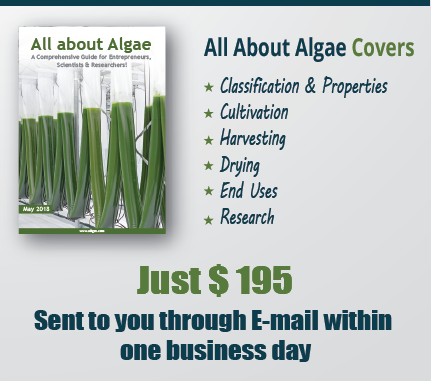Alginates are cell-wall constituents of brown algae (Phaeophyceae). Brown seaweed contains mixed alginic acid salts, which are the basic raw materials used in the production of alginates. Alginate is a polymer consisting of sequences of α-L-guluronic acid and β-D-mannuronic acid. Alginates are referred to as either high-M or high-G alginates, depending on the ratio of the two monomers that form the alginate molecule
Species of Algae Used:
- Macrocystis pyrifera
- Ascophyllum nodosum
- Laminaria hyperborean
- Laminaria japonica
- Lessonia nigrescens
- Lessonia flavicans
- Ecklonia maxima
- Durvillea antarctica
- Durvillea potatorum
- In the food industry, alginates have an excellent functionality as a thickening agent, gelling agent, emulsifier stabilizer, texture-improver (for noodles), to improve the quality of food. The unique properties of alginate are utilized in foods like ice cream, jelly, lactic drinks, dressings, instant noodle, and beer.
- Alginate is used in textile printing, ice cream, jelly, lactic drinks, dressings, instant noodle, and beer.
- Alginate is used for the production of welding rod, as a binder of flux. It is also used as a binder and thickening agent for pet-food, fish feed.
- In pharmaceutical industry, alginic acid is compounded into tablets to accelerate disintegration of tablet for faster release of medicinal component. Alginate forms gel in the high-acidic stomach and protect stomach mucosa.
- In cosmetics, alginate is used in cosmetics area with several applications with its functionality of thickener and moisture retainer. Alginate helps retaining the color of lipstick on lip surface by forming gel-network
| Click Here to Know More | |
| Poly unsaturated fatty acids(DHA,ARA,GAL and EPA) Aquaculture Feed (Shrimp feed, Shellfish Feed, Marine Fish Larve cultivation ) |
|



